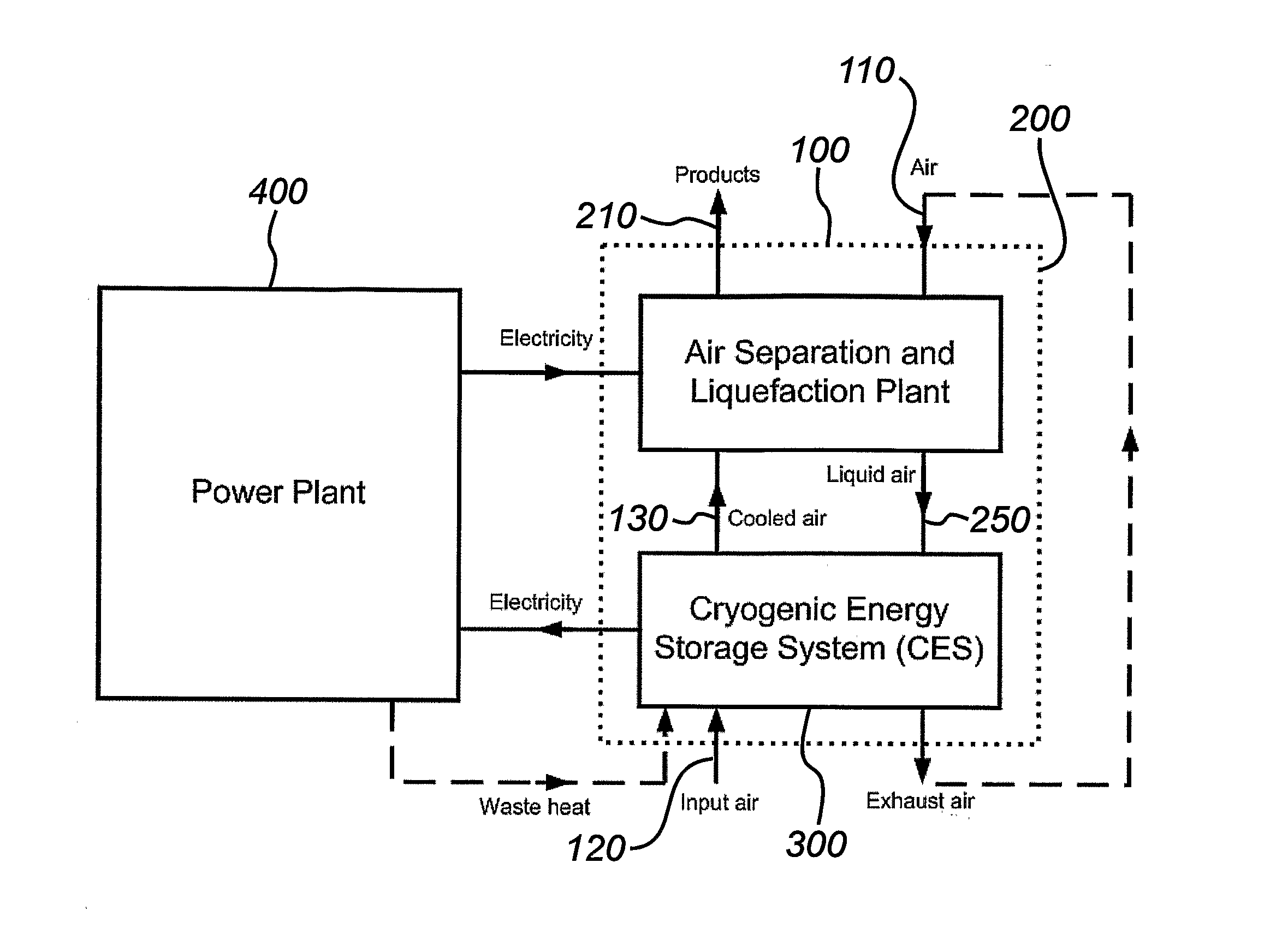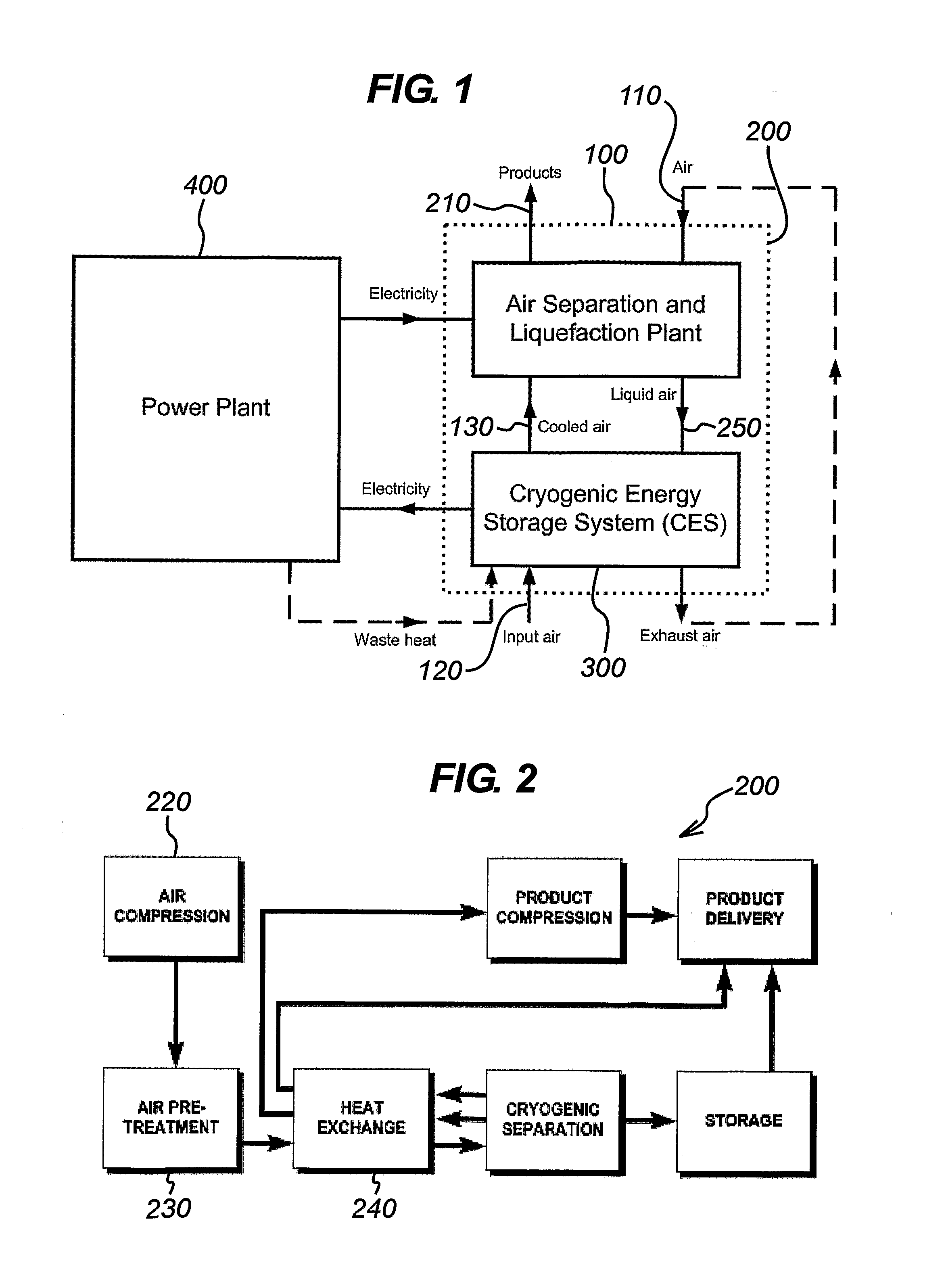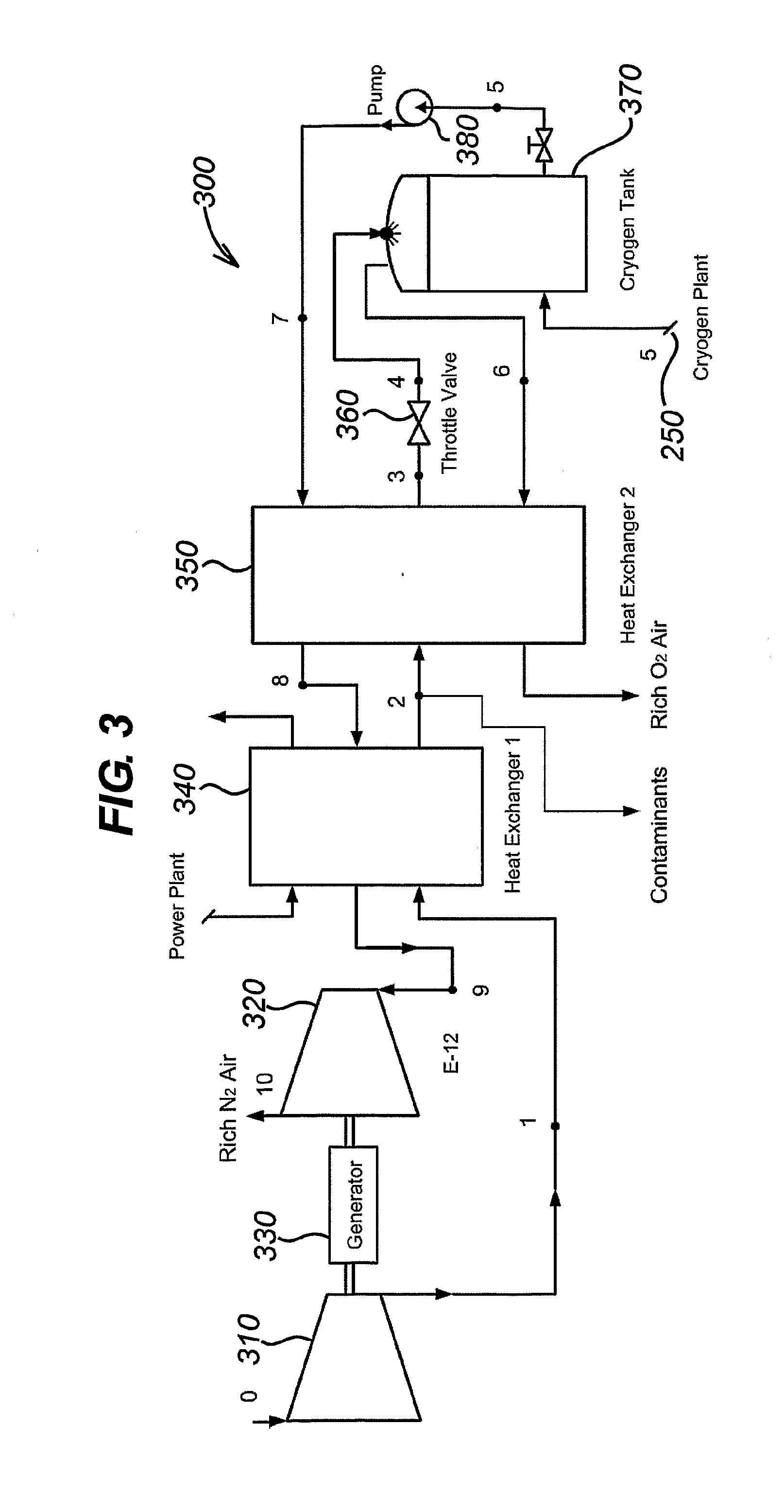Method of Storing Energy and a Cryogenic Energy Storage System
a cryogenic energy and energy storage technology, applied in the direction of greenhouse gas reduction, container discharge methods, lighting and heating apparatus, etc., can solve the problems of pumped hydro, inability to meet the needs of users, so as to achieve the effect of minimising the effect of the environmen
- Summary
- Abstract
- Description
- Claims
- Application Information
AI Technical Summary
Benefits of technology
Problems solved by technology
Method used
Image
Examples
Embodiment Construction
[0110]A conceptual design of the energy storage system of the present invention is shown in FIG. 1. The whole system is shown within dotted box 100. System 100 consists of two major parts: an air liquefaction part 200, and a Cryogenic Energy Storage unit (CES) 300. In off-peak hours, surplus electricity is fed to the air liquefaction plant 200 to produce liquid air, which is then used in peak hours by the CES 300 to generate electricity. The power plant 400 and the whole energy storage system 100 only have to exchange electricity, so no modification of the power plant 400 is needed thus ensuring maximum flexibility. At the same time, any available waste heat 410 from the flue gas of the power plant 400 can be used by the CES 300 to heat the working fluid.
[0111]Within the energy storage system 100, there are two major air streams. One stream 110 feeds air to the air liquefaction plant 200 to be liquefied and stored as liquid air in a cryogen tank. During peak time the liquid air is p...
PUM
 Login to View More
Login to View More Abstract
Description
Claims
Application Information
 Login to View More
Login to View More - R&D
- Intellectual Property
- Life Sciences
- Materials
- Tech Scout
- Unparalleled Data Quality
- Higher Quality Content
- 60% Fewer Hallucinations
Browse by: Latest US Patents, China's latest patents, Technical Efficacy Thesaurus, Application Domain, Technology Topic, Popular Technical Reports.
© 2025 PatSnap. All rights reserved.Legal|Privacy policy|Modern Slavery Act Transparency Statement|Sitemap|About US| Contact US: help@patsnap.com



